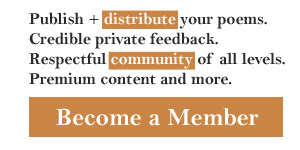This is an analysis of the poem In An Estuary that begins with:
A crackling fire. Light, heat in the felucca.
Pikes in the water. Pearl-white sand below....
Elements of the verse: questions and answers
The information we provided is prepared by means of a special computer program. Use the criteria sheet to understand greatest poems or improve your poetry analysis essay.
- Rhyme scheme: Xaba cddc XeXeXbb
- Stanza lengths (in strings): 4,4,7,
- Closest metre: iambic pentameter
- Сlosest rhyme: enclosed rhyme
- Сlosest stanza type: tercets
- Guessed form: sonnet with iambic pentameter or irregular meter
- Metre: 010101100010 1001011101 01011110110 1111010101 0111010101 11010101110 11011101110 1011011101 01111101110 1101110001 01110101110 1101111111 01011101110 01110101110
- Amount of stanzas: 4
- Average number of symbols per stanza: 165
- Average number of words per stanza: 30
- Amount of lines: 14
- Average number of symbols per line: 46 (strings are more long than medium ones)
- Average number of words per line: 9
Mood of the speaker:
There are many exclamation marks in the poem. The speaker is excited. He or she has strong feelings on the subject that is described in the poem.
The author used lexical repetitions to emphasize a significant image; on is repeated.
The author used the same words a, the at the beginnings of some neighboring stanzas. The figure of speech is a kind of anaphora.
If you write a school or university poetry essay, you should Include in your explanation of the poem:
- summary of In An Estuary;
- central theme;
- idea of the verse;
- history of its creation;
- critical appreciation.
Good luck in your poetry interpretation practice!
Pay attention: the program cannot take into account all the numerous nuances of poetic technique while analyzing. We make no warranties of any kind, express or implied, about the completeness, accuracy, reliability and suitability with respect to the information.

